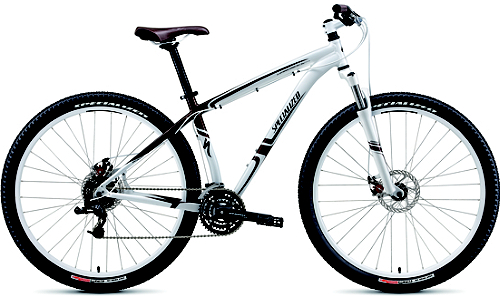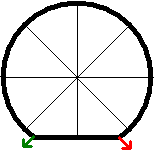
|
The Physics of Winter Biking |
||
|
Wheel Size Suspension Brakes Helmet Color Bibliography |
There's several things to consider when selecting the appropriate size of wheel for your bicycle.
Spinning objects have a property called the moment of inertia, I, that represents its rotational inertia, or how hard it is to start or
stop moving. For most objects the moment of inertia is a value that is roughly proportionate to MR2, where M is the object's mass and R is
its spinning radius. Thereby, a larger size wheel will have a greater moment of inertia, meaning you have to apply more torque, and thereby more force
to it in order to achieve the same angular acceleration. However, it will also retain its angular velocity better than a smaller size wheel, since a
greater external force would also be required to slow it down. Traveling up a hill, a larger wheeled bicicly would accelerate more slowly than a
smaller one, but it would be more likely to retain that speed. This could be very efficient in the summer, but in the winter snow is always ready to
provide additional friction to slow down your cycling.
There are certainly more factors to be considered, however. The idea of moment of inertia assumes a rigid, spinning object, but a tire on the ground does compress when under the weight it supports. This results in a flat part of the wheel, that is touching the ground at any time, often called the tire's "footprint." A larger wheel will have a slower curvature, and thereby a larger footprint. Although we know that the net force of friction is not affected by the contact area, this does still have positive affects for winter biking. For one thing, A larger footprint decreases the likelyhood that the entire contact patch will be on top of an icy patch with less friction. Also, although the net force of friction remains the same, a larger contact patch means that each part of the tire is experiencing less stress to attain that force, meaning that tread and studs will last longer. So although this does not allow you to bike any faster, larger wheels will survive better over extended use.
With these effects considered, most cyclists recommend a larger wheel size. |
